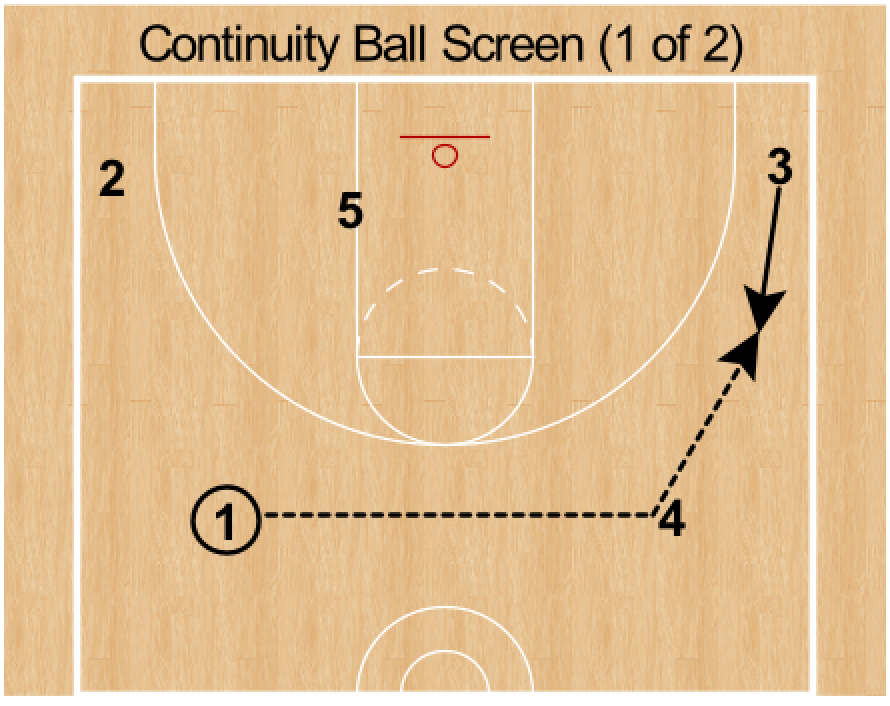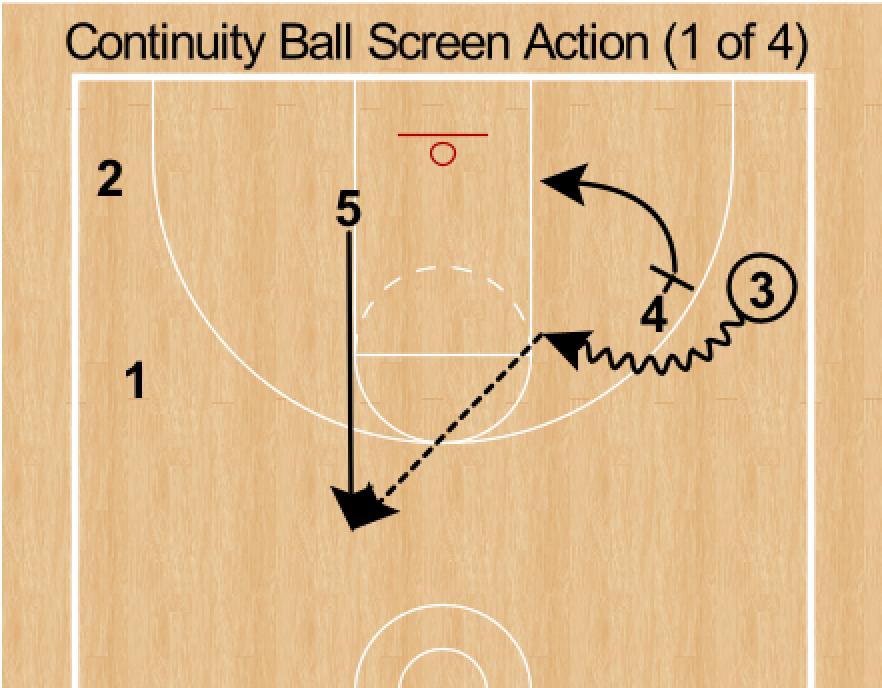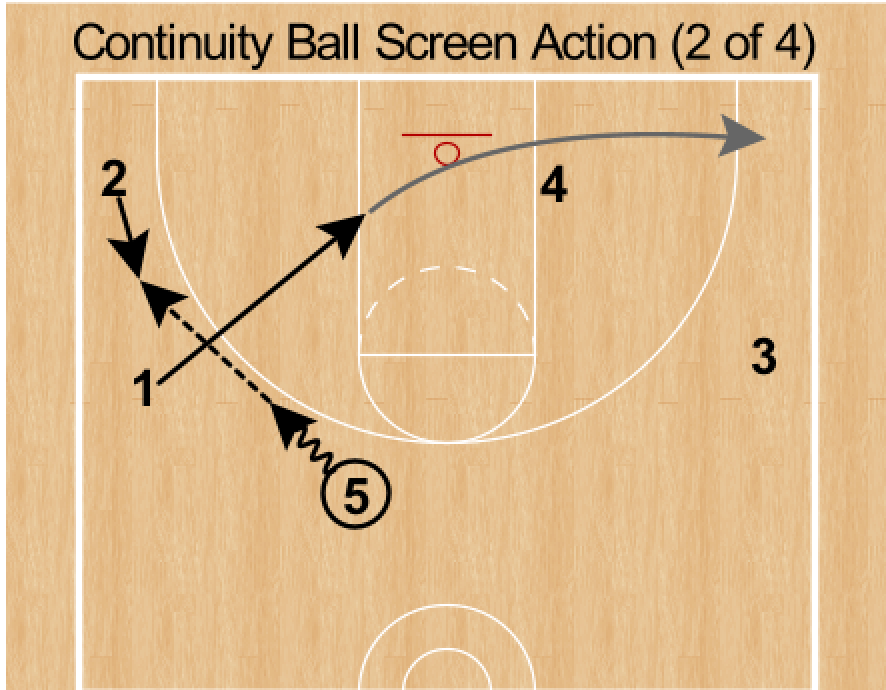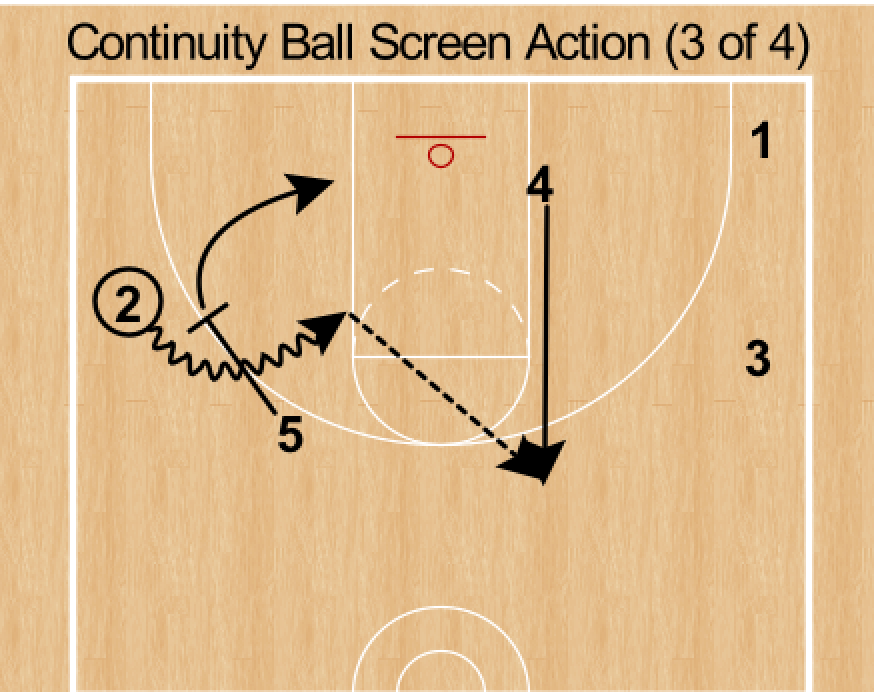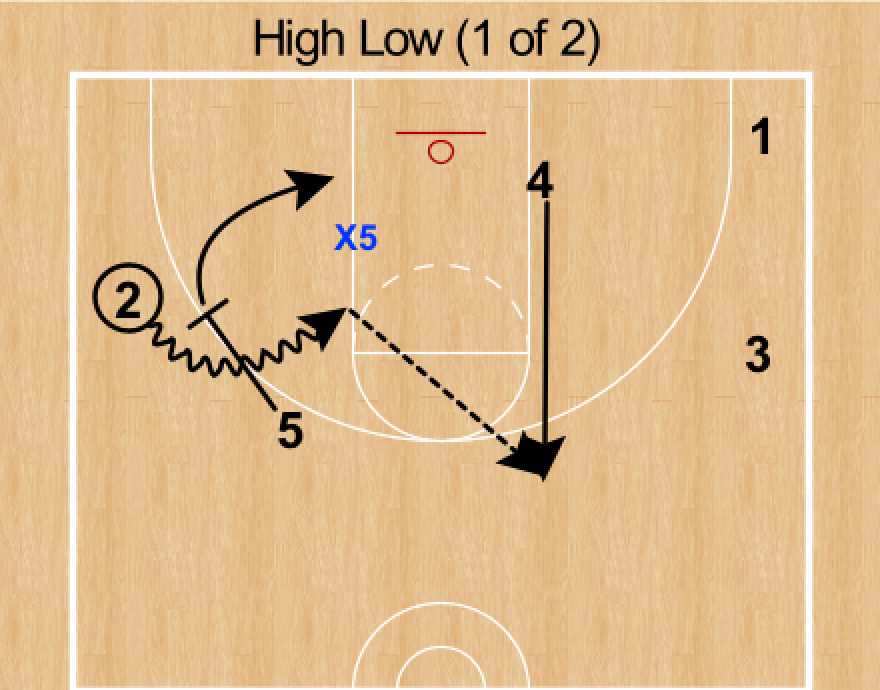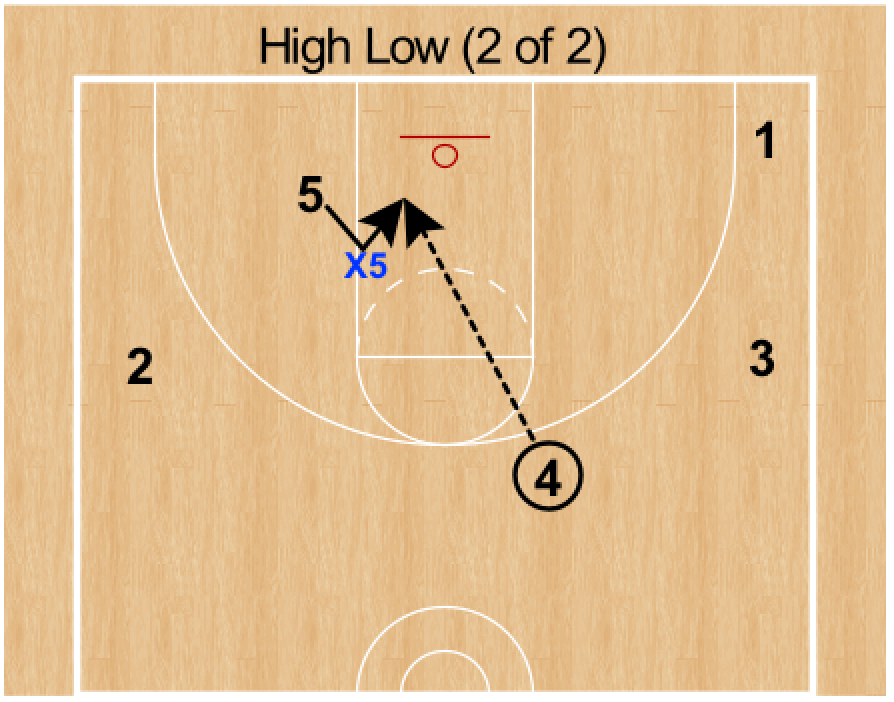Ball Screen Continuity Offense
What is the Ball Screen Continuity Offense?
Ball Screen Continuity is a popular motion offense that seeks to create advantages through continuous wing ball screens or dribble handoffs. This action is extremely popular across the high school and college ranks, and while the action itself is used at the NBA level, it is rare to see it run as a continuity due to the 24 second shot clock.
If you tuned into the Olympics last summer, and you may have seen teams like Australia, Germany and Spain utilize this offense. This offense is one of the more popular continuities as it gets everyone involved, utilizes both sides of the floor and puts pressure on the defense and their ball screen coverage.
In this offense, there are two designated screeners (4 & 5) that alternate setting wing ball screens and three ball handlers that alternate attacking off the ball screens. Since this action typically uses wing ball screens with an empty corner, there will be three players spaced on the weak side opposite of the ball screen action. The big (screener) not setting the ball screen is positioned in weak side slot—he is the reversal man if there is no advantage created from the ball screen, and the additional two ball handlers fill the weak side wing and corner.
If there is no advantage from the initial ball screen and the ball is reversed to the opposite big in the slot, the player on the wing will back cut through to the opposite corner. The corner man will then lift to receive a pass & follow ball screen and the action continues.
Ball Screen Continuity Set Up:
There are a number of ways teams flow into ball screen continuity (drag, UCLA cut, thru action, etc.), but no matter how you flow into it, the key is to end up in an empty wing ball screen with three players spaced on the weak side.
For the sake of this breakdown, we will flow into our ball screen continuity through a 4-out transition break. 2 & 3 will sprint wide and deep to the corners, while the lead big (5) runs to the rim before shaking to the strong side block. The trailing big will fill the weak side slot opposite of the ball handler. In this example, we will flow into a wing ball screen (with an empty corner) by reversing the ball to the trail big (4) who swings it to the player lifting from the corner (3). The trail big will then follow his pass into an empty wing ball screen for 3.
Ball Screen Continuity Action:
As the initial wing ball screen is taking place, the opposite big/screener will lift to the weak side slot (aligned with the lane line). The two remaining perimeter players are positioned in the weak side corner and wing.
If there is no advantage created on the initial ball screen, 3 will reverse the ball to the big (5) in the weak side slot. This reversal triggers a back cut from the player (1) located on the now strong side wing. As 1 back cuts and empties through to the opposite corner, 2 lifts to receive the pass and follow ball screen from 5.
As this ball screen action is taking place, 4 begins lifting to the weak side slot. If there is no advantage, the ball is reversed and the action continues.
While back cutting the wing through to the opposite corner is the most popular way teams flow into wing ball screens with an empty corner once in the continuity, you can add variations by setting pin downs, cutting over the top and faking a DHO, etc.
ball Screen Continuity Scoring Options:
Drive
The first option for the ball handler as he comes off the empty wing ball screen is to get downhill and finish at the rim. As the defense begins to jump or overplay the screen, then the ball handler can reject to get downhill.
Pull Up
If the ball handler is a solid shooter, they can also step into a pull up jumper if given space.
Hit the Screener
Hitting the screener rolling to the rim is also a great option. Since the strong side corner is empty as the ball screen is taking place, there is no “tag” or help defender for the screener rolling to the rim. If the screener is an outside threat, pick & popping is another great option that forces a long closeout.
Kick to the Weak side
If there is no advantage created from the empty wing ball screen, the ball handler can look to kick to the weak side for an open shot, drive or to continue the offense.
Back Cuts
If the big cannot go high-low, the wing will back cut to the rim for a potential easy finish. If the corner lifting to receive the pass & follow ball screen is ever overplayed, he can also back cut.
High-Low Entry
Upon receiving the reversal pass, the big in the slot immediately looks to go high-low with the roller. This is a great option if team’s decide to switch the ball screen.
Advantages of ball Screen Continuity Offense:
Like all offenses, ball screen continuity has both advantages and disadvantages. Knowing both is critical before implementing with your team.
Perhaps the biggest advantage to running ball screen continuity, or really any continuity offense for that matter, is that it can be easily implemented and learned since the offense itself is a pattern.
Another advantage to this offense is the fact it gets the ball moving from side-to-side and constantly shifts the defense. In addition to the ball movement, continuity ball screen also gets every single player on the floor involved—the three ball handlers alternate attacking off of wing ball screens, and the two screeners alternate setting ball screens and rolling.
As we discussed above, this offense also utilizes wing ball screens with an empty strong side corner. This means there is no defender to “tag” or help on the screener as he rolls to the rim. This forces the two defenders defending the ball screen to be on the same page with their communication and coverage or risk giving up easy finishes at the rim.
This offense also puts an extreme amount of pressure on the rim between the ball handler attacking off the ball screen and the screener rolling to the rim. This pressure will often collapse the defense and lead to a high number of open kick out threes.
The final advantage worth noting with the continuity ball screen offense is the fact that this offense allows you to play two post players at a time. In today’s modern game of pace & space, it is becoming harder and harder to play multiple bigs together. However, since the continuity ball screen utilizes two screeners, you can seamlessly play two bigs at a time without issue on the offensive end.
Disadvantages of ball Screen Continuity Offense:
The biggest disadvantage to running the continuity ball screen as your primary offense is that it can be easily scouted by opponents, especially by league opponents who you typically face multiple times per season.
What makes this offense so easy to implement and learn is also what makes it easy to scout—it is a continuous pattern.
You will also struggle with this offense if you don’t have consistent outside shooters on the floor at all times. If you don’t have shooting on the floor, the defense will collapse and clog the paint to neutralize the ball screen action and live with any kick out threes.
You’ll often notice that teams who run this offense rarely create a high percentage scoring opportunity on the first ball screen. Instead, the scoring opportunities are usually created on the second or third ball screens after the ball has been reversed side-to-side. For this reason, it is hard to play at a consistently fast pace when running this offense.
Finally, if you don’t have players who know how to attack and make reads off ball screens, this offense isn’t for you. Since this offense relies solely on ball screens to create advantages, having high I.Q. players who understand the reads and defensive coverages they are facing is a must.
BYU Cougars Ball Screen Continuity Offense:
The BYU Cougars, under coach Mark Pope, run continuity ball screen as their primary offense. Take a look at the different ways they flow into their empty wing ball screens in the video below.
ball Screen Continuity Sets & ATOs:
Teams that run continuity ball screen as their primary offense use a variety of counters and wrinkles to add variation and randomness to the continuity and keep the defense guessing. Check out our favorite continuity ball screen sets and counters in the video below.

